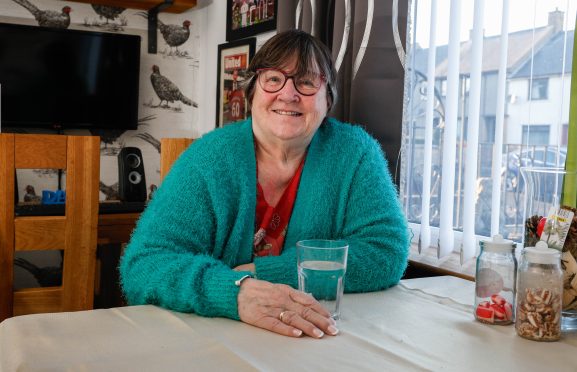Buying uniforms for growing kids, paying for trips, creating outfits for dress-up days – the cost of the school day can soon add up.
So much so that many schools noticed certain pupils would be absent on days like World Book Day, when kids dress up as book characters, and Christmas Jumper Day, or always late paying for excursions.
That’s why Dundee schools – like many across the country – introduced initiatives to cut the cost of the school day and help families living in poverty.
Here, we hear from one head teacher about her determination to ensure no child misses out.
And we’ve highlighted five of the creative ways Dundee schools are cutting the cost of the school day.
Mill of Mains Primary School
Lessons at Mill of Mains Primary School usually begin with children being served toast in the classroom.
Head teacher Vivienne Snee explained: “We did a survey and we reckon there could be as many as 25% of our children who come to school without breakfast.
“It could be they’ve slept in. It could be there isn’t anything suitable to eat in the house. Some kids just don’t like to eat first thing in the morning.
“If they are starving they can’t concentrate; learning improves once they’ve had something to eat.”
At the school around four in every 10 pupils are from deprived areas – and then there are the families Vivienne describes as the ‘working poor’.
That’s why it made several changes to reduce the cost of the school day.
I don’t want any child to miss out or stand out for all the wrong reasons.”
Vivienne Snee, Mill of Mains Primary School head teacher
School trips are subsidised for most and completely free for those who can’t afford to contribute.
The school has a rail of uniforms people can help themselves to.
There are no dress-up or dress-down days. Events such as Halloween parties and discos are held in the evening so they are optional.
Christmas Jumper Day is the whole of December so children wear jumpers on different days and those without one don’t stand out – although donations of new and used jumpers make that unlikely now.
Vivienne explained: “We noticed on days like that [dress-up days] there would be children that were missing, so for the last four or five years we haven’t done anything like that.
“I don’t want any child to miss out or stand out for all the wrong reasons.”
Cutting the cost of the school day across Dundee
1. Uniform swaps
Many schools keep stocks of uniform, either new or used clothing donated when kids outgrow them. St Paul’s Academy is among those with this provision, and also has what it calls Coats Corner, where pupils who need one can help themselves to a warm jacket or blazer.
2. No dress down or dress up days
World Book Day, Christmas Jumper Day, non-uniform days – many schools would see the same pupils absent on these days. At Forthill Primary School World Book Day is now focussed on the books rather than the costumes – instead of dressing up as their favourite character pupils swap books and take part in book-related activities. And Christmas Jumper Day is ‘Wear Something Christmassy Day’ – so a piece of tinsel is enough.
3. Subsidising school trips
School trips – particularly the traditional P7 residential – can be a real expense for many families. At Mill of Mains Primary School trips now cost no more than £5 and parents pay only £100 of the £285 cost for the P7 Dalguise trip. Families who can’t afford even that pay nothing. The rest is covered by the Pupil Equity Fund (PEF), money given to schools to help close the poverty-related attainment gap.
4. Breakfast and snacks
Some schools have teamed up with local supermarkets to provide breakfast food. At Harris Academy breakfast bars are available for young people to access discreetly. The school also runs Snappy Snacks for those who want to go with their friends to the shops at lunchtime but don’t have money for food.
5. Reducing or covering course costs
Costs attached to some senior phase courses can be enough to deter some pupils from choosing them. So to ensure that pupils can study the subjects they want to Harris Academy uses PEF money to cover costs where necessary. Departments are also asked to take costs into consideration when planning lessons.
‘Tackling financial barriers’
All Dundee schools have action plans for reducing the cost of the school day, devised after an initial project run by Dundee City Council and Child Poverty Action.
Over 200 interventions recently highlighted in a report to the council’s children and families services committee help tackle the financial barriers faced by many families, according to committee convener Councillor Stewart Hunter.
He said: “We are under no illusions that this remains a huge task.
“But I am heartened by the creativity and dedication of staff who are making sure that pupils are not disadvantaged by financial barriers and can play a full part in school life.”












